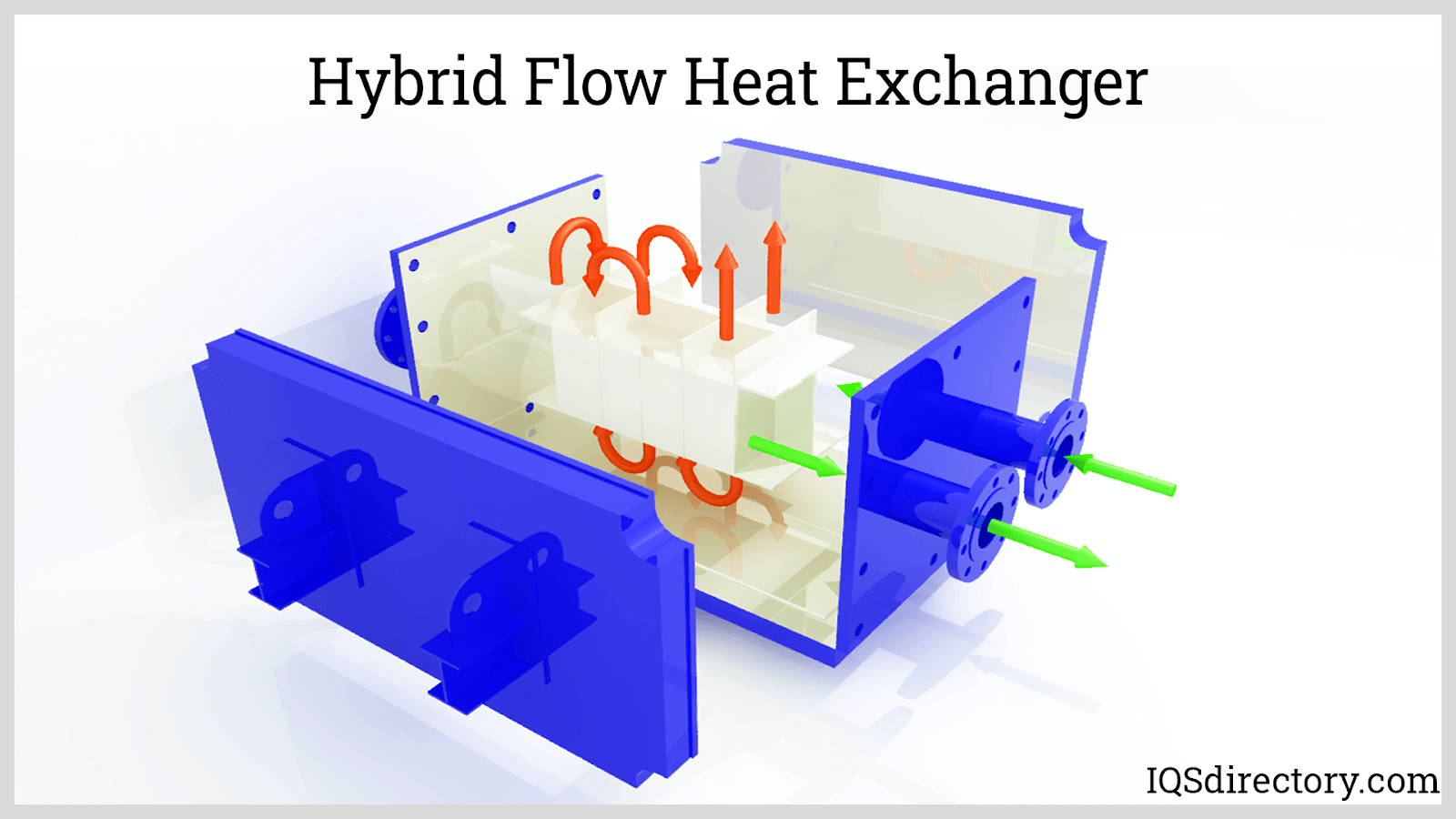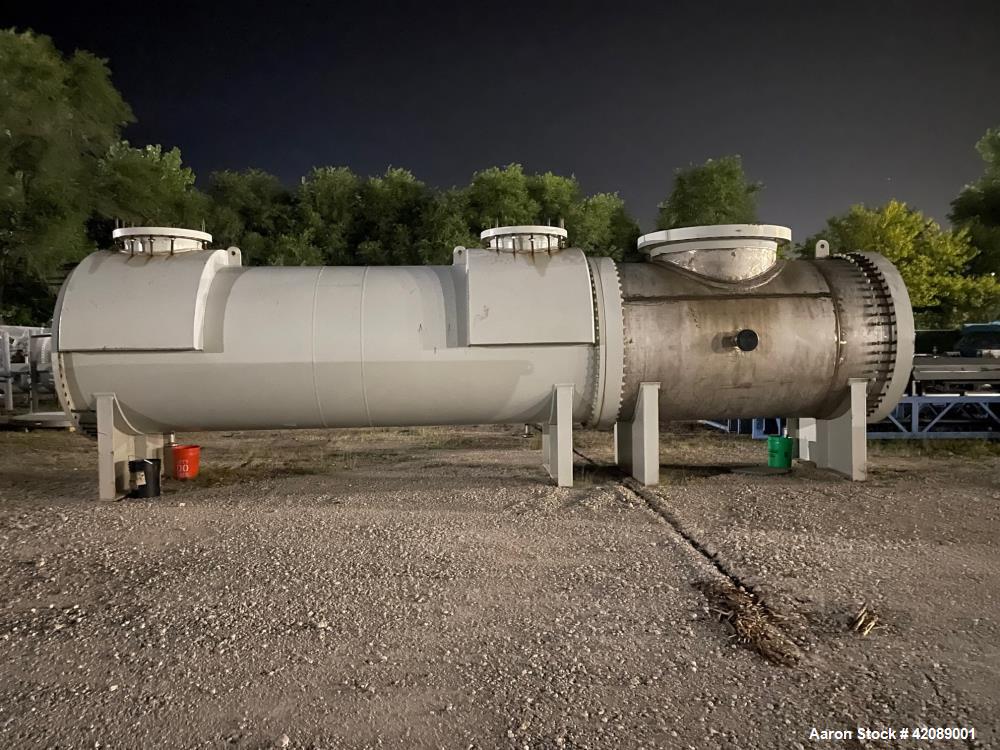A Comprehensive Overview to Picking the Right Heat Transfer Solutions for Your Needs
Selecting the proper Heat transfer system is vital for functional effectiveness. Numerous systems accommodate different demands, affected by factors such as temperature array and liquid type. Comprehending the principles behind Heat transfer, such as convection, conduction, and radiation, is important. In addition, evaluating power sources and maintenance practices can impact long-term performance. A closer exam of these factors to consider reveals just how to customize a system to certain demands. What should one prioritize in this complex decision-making procedure?
Recognizing Heat Transfer: Trick Ideas and Concepts
Heat transfer might seem like a straightforward idea, it encompasses an array of concepts that are basic for efficient system layout - DVS Heat Transfer Systems. Recognizing these principles is essential for designers and engineers that aim to maximize thermal performance in numerous applications. Conduction, as an example, includes the transfer of Heat with solid products, while convection describes the activity of Heat within liquids. Radiation, another crucial concept, describes exactly how Heat can be moved with electro-magnetic waves. Each of these mechanisms plays a crucial role in figuring out exactly how power moves within a system. By extensively grasping these concepts, professionals can make enlightened choices, guaranteeing that Heat transfer systems operate effectively and fulfill the certain demands of their applications
Kinds Of Heat Transfer Equipments: An Introduction
Recognizing the concepts of Heat transfer prepares for discovering the various kinds of Heat transfer systems offered. Heat transfer systems can be classified primarily into 3 types: radiation, transmission, and convection. Transmission includes Heat transfer with solid products, counting on direct contact in between fragments. Convection, on the other hand, occurs in fluids (liquids and gases) where the activity of the liquid itself promotes Heat transfer. Radiation includes the transfer of Heat with electromagnetic waves and does not call for a medium, allowing it to take place in a vacuum. Each kind of system has unique features and applications, making it crucial for people and organizations to carefully evaluate their certain requirements when choosing one of the most appropriate Heat transfer option.
Applications of Heat Transfer Equipments in Various Industries
Heat transfer systems play an essential function across different sectors, influencing effectiveness and product high quality. In industrial production processes, they facilitate accurate temperature control, while in food and drink handling, they guarantee safety and security and conservation. Additionally, heating and cooling and climate control systems depend heavily on reliable Heat transfer to keep comfy atmospheres.
Industrial Manufacturing Processes

Various industrial production processes count greatly on effective Heat transfer systems to optimize performance and enhance product quality. In sectors such as metalworking, Heat exchangers play an important function in preserving excellent temperature levels during welding, casting, and building. These systems ensure uniform Heat circulation, which is vital for attaining wanted product residential properties. Likewise, in the chemical manufacturing sector, Heat transfer systems promote exact temperature control during responses, impacting yield and safety. Additionally, in fabric production, efficient Heat management is essential for dyeing and completing procedures, influencing color uniformity and fabric top quality. By picking appropriate Heat transfer technologies, makers can enhance power performance and lower functional prices, eventually leading to a much more competitive and sustainable manufacturing setting.
Food and Drink Handling
Reliable Heat transfer systems are just as essential in the food and beverage handling sector, where maintaining suitable temperature levels is vital for food safety and security and high quality. These systems play an essential function in procedures such as sterilization, pasteurization, and cooking, making sure that products are safe for intake and maintain their dietary value. Heat exchangers, for example, efficiently move Heat between fluids, maximizing power use while reducing temperature changes. Additionally, refrigeration systems are basic for maintaining perishable products and prolonging shelf life. The choice of Heat transfer innovation straight affects functional performance and item honesty, making it vital for food and beverage producers to select the proper systems tailored to their specific handling requirements. This mindful choice inevitably adds to consumer complete satisfaction and food safety and security.

A/c and Environment Control
While many industries depend on Heat transfer systems for effectiveness, COOLING AND HEATING (Heating, Air Flow, and Cooling) plays a necessary role in maintaining indoor environment control across different settings. These systems make use of Heat transfer principles to regulate humidity, air, and temperature high quality, guaranteeing convenience and security in domestic, business, and commercial settings. Appropriately made heating and cooling systems boost energy efficiency, reduce functional expenses, and decrease ecological effect. In commercial buildings, as an example, reliable climate control adds to staff member productivity and client contentment. In industrial applications, cooling and heating systems help maintain ideal problems for equipment procedure and item conservation. Picking the best Heat transfer system is crucial for meeting specific environment control requirements and attaining general system performance.
Examining Power Resources for Heat Transfer Systems
In examining energy sources for Heat transfer systems, a comparison of renewable resource choices and fossil gas factors to consider is necessary. Renewable resources, such as solar and wind, offer lasting options that can minimize ecological impact. Conversely, nonrenewable fuel sources remain widespread because of their well-known infrastructure and power thickness, prompting a mindful evaluation of both options.
Renewable Energy Options

Fossil Fuel Considerations
Assessing nonrenewable fuel source considerations is necessary for the performance and sustainability of Heat transfer systems. Nonrenewable fuel sources, such as natural gas, oil, and coal, are traditional energy sources that give useful link significant Heat output, making them popular options for commercial and domestic applications. However, their environmental influence, including greenhouse gas discharges and source deficiency, elevates worries. When selecting a warmth transfer system, it is crucial to examine the availability, expense, and regulative aspects related to these fuels. In addition, the efficiency of fossil fuel systems must be taken into consideration, as greater efficiency can reduce some environmental disadvantages. Ultimately, a balanced technique considering performance and sustainability can lead decision-makers towards one of the most suitable Heat transfer service for their details requirements.
Variables to Take Into Consideration When Picking a Heat Transfer System
Picking an appropriate Heat transfer system needs mindful consideration of numerous elements that can substantially impact performance and performance. One essential aspect is the operating temperature array, which determines the products and design ideal for the application. In addition, the kind of fluid made use of in the system-- whether gas or fluid-- affects Heat transfer effectiveness and compatibility. The system's size and capacity must align with the particular needs of the procedure to stay clear of inadequacies. Power resource availability is also crucial, affecting operating expense and sustainability. The installation environment, consisting of area restraints and ease of access for upkeep, plays a significant duty in system option. Lastly, regulative conformity and safety and security standards need to be taken into consideration to guarantee the system satisfies all lawful demands.
Upkeep and Efficiency Optimization for Heat Transfer Solutions
Preserving Heat transfer systems is vital for making sure maximum efficiency and longevity. Normal maintenance activities, such as cleaning up Heat exchangers and examining insulation, assistance avoid performance losses due to fouling and thermal connecting. In addition, keeping track of system parameters, consisting of stress and temperature level, permits early detection of abnormalities, decreasing downtime and costly repair work. Carrying out a preventative maintenance routine can enhance performance and prolong the life expectancy of parts. Upgrading to innovative control systems can improve operational efficiency by adjusting to varying conditions and loads. By focusing on maintenance and performance optimization, operators can accomplish lowered power usage, reduced operational expenses, and boosted overall system dependability, ultimately leading to far better resource use and a more sustainable procedure.
Future Trends in Heat Transfer Technologies
As sectors increasingly focus on sustainability and power performance, future fads in Heat transfer technologies are set to go through substantial improvements. Innovations such as advanced products, consisting of carbon nanotubes and nanofluids, guarantee improved thermal conductivity and effectiveness. In addition, original site the integration of renewable resource resources into Heat transfer systems is obtaining energy, promoting environment-friendly options. Smart modern technologies, including IoT sensors, are anticipated to reinvent monitoring and control, enabling real-time data evaluation for maximized efficiency. The growth of modular and compact systems will certainly assist in less complicated installment and upkeep, catering to varied applications. These improvements indicate a change in the direction of even more sustainable, reliable, and versatile Heat transfer services, lining up with worldwide energy objectives and ecological criteria.
Regularly Asked Questions
What Are the Environmental Impacts of Heat Transfer Solutions?
The environmental impacts of Heat transfer systems can include greenhouse gas discharges, energy intake, and possible thermal contamination. In addition, inappropriate disposal of ineffectiveness and materials can add to source depletion and ecological community disruption.
How Do I Calculate the Cost-Effectiveness of a Warm Transfer System?
To determine the cost-effectiveness of a warmth transfer system, one need to evaluate first expenses, functional costs, maintenance demands, and energy efficiency, comparing these factors versus the anticipated lifespan and efficiency of the system.
Can Heat Transfer Solution Be Used in Residential Setups?
Heat transfer systems can certainly be used in domestic settings. They give reliable home heating and cooling services, making homes extra comfy while possibly lowering power prices. Their adaptability enables different applications in residential settings.
What Security Laws Put On Heat Transfer Solutions?
Safety policies for Heat transfer systems commonly consist of guidelines on maintenance, operation, and installation. Conformity with neighborhood building codes, manufacturer specs, and market criteria is important to ensure reliable and secure system performance in different applications.
Just How Do Different Materials Affect Heat Transfer Performance?

Transmission, for instance, entails the transfer of Heat via solid materials, while convection refers to the activity of Heat within liquids. Comprehending the concepts of Heat transfer lays the groundwork for checking out the different kinds of Heat transfer systems available. Heat exchangers, for circumstances, efficiently transfer Heat in between liquids, optimizing energy use while decreasing temperature changes. these details In assessing energy resources for Heat transfer systems, a comparison of eco-friendly power choices and fossil gas factors to consider is vital. Metals, such as copper and light weight aluminum, conduct Heat properly, whereas insulators like rubber and glass slow down Heat circulation.